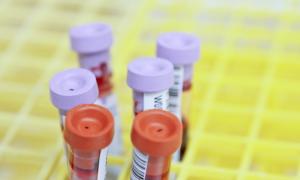Europe faces high rates of sexually transmitted infections

A series of four articles published by The Lancet Regional Health – Europe is driving the analysis and approach to STIs, redirecting prevention and control strategies
Despite advances in diagnosis and treatment, STIs have become a serious public health issue. In the WHO European Region, there was a 17 million reported cases of bacterial STIs in 2019. Unfortunately, recent events in the region, such as the COVID-19 pandemic and the war in Ukraine, have further jeopardized progress towards the 2030 agenda's goal: to eliminate the epidemics of HIV, viral hepatitis, and STIs.
Comprehensive review of STIs in Europe
Effective control of STIs in Europe requires identifying the region's challenges and the limitations of current approaches. Therefore, The Lancet Regional Health - Europe gathered a group of experts to provide a comprehensive review of emerging and re-emerging STIs on the continent, identifying general and specific challenges. This series of articles covers four key aspects: current epidemiology in Europe, ongoing prevention strategies, approaches to management of asymptomatic infections, and state-of-the-art treatments.
In addition to diagnosing the status of STIs in Europe, the group of experts has issued specific recommendations for prioritizing effective control of these diseases. This exercise is essential to chart a roadmap that effectively addresses this pressing public health problem.
Notification of STIs
Out of the 53 countries in the region, epidemiological data has been collected from 49, revealing significant variations in the reporting of bacterial STIs. Northern and Western European countries show higher rates per 100,000 population, possibly due to more rigorous surveillance systems and reporting practices. The series highlights new key populations due to changes in sociopolitical contexts: migrants, refugees, sex workers, and men who have sex with men, all of them with limited access to healthcare services, become priority populations for control policies.
Disparities in healthcare and resource shortages in some countries are identified as obstacles to prevention and control strategies in Europe
The importance of maintaining health education and condom promotion, along with other biomedical interventions, is emphasized. There is a need to promote equity in access to pre-exposure prophylaxis (PrEP) for HIV, which has been introduced in 38 of the 53 countries in the region but remains underutilized, particularly in Central and Eastern European countries. Cabotegravir, the first long-acting antiretroviral, has the potential to revolutionize HIV PrEP, administered in an injection every two months instead of a daily pill. In the field of vaccines, achievements have been made in controlling viral hepatitis A and B, as well as HPV. The future lies in controlling gonorrhoea through cross-immunity generated by the meningococcus B vaccine and mRNA-based vaccines for HIV immunization.
Antibiotic resistance means new therapeutic management of STIs
The therapeutic management of bacterial STIs (gonorrhoea, mycoplasma, and syphilis) faces challenges due to the increasing antimicrobial resistance and the lack of solutions in certain cases, stemming from a shortage of scientific research in this field. Current strategies for responding to antimicrobial resistance are falling behind, emphasizing the need for new approaches, such as rapid diagnostic tests to reduce overuse of antibiotics in cases where infection is not confirmed, molecular tests for identifying drug-resistant pathogens, and the reuse of older antibiotics for treating STIs.
The findings of these four documents underscore the need to strengthen public health services, harmonize surveillance and reporting systems, promote free and easy access to prevention and treatment strategies, and address structural determinants such as universal access to healthcare systems and reducing the stigma associated with STIs. The implementation of these recommendations is essential to achieve the goals of HIV and STIs on the 2030 agenda.